When you’re trying to choose a paintbrush, there are two options. You can get one with natural bristles or one with synthetic bristles. You can get thick bristles, thin bristles, long bristles, short bristles—the list goes on. So which one is better?
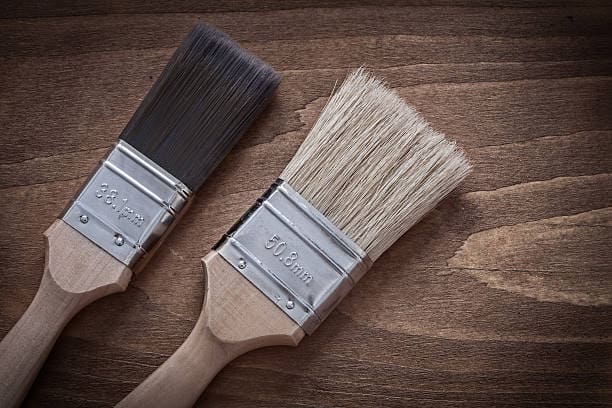
Natural bristle brushes might be your best bet if you want something soft and fluffy for applying fine details or delicate strokes of colour. But if you’re looking for something that will stand up to harsh solvents and chemicals without getting damaged by them—which means that it’s easier to clean after using it—then synthetic paint brushes might be the way to go.
Synthetic Brushes Materials
If you’re an artist, you know how important it is to have the right tools for your craft. And if you’re a painter, you know how hard it can be to find the just right paintbrush that will do all the work for you and give you the desired results.
That’s why we’re so excited about synthetic paintbrushes! They’re made of nylon, polyester, or other synthetic fibres that are tough enough to handle tough jobs but soft enough to deliver smooth strokes and beautiful colours. Synthetic paint brushes are versatile—they can be used with acrylics, oils, watercolours, or any other type of paint. They’re also easy to clean and maintain—throw them in the dishwasher or washing machine when they need a good scrubbing!
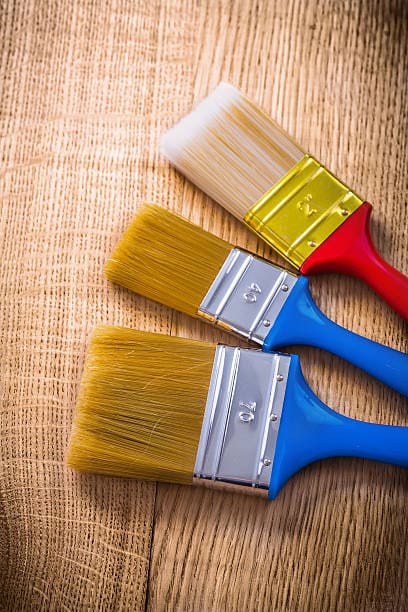
Synthetic brushes are also excellent choices if you need a durable brush that can withstand heavy use.
- Nylon
- Polyester
- Combination of both
Where Are Synthetic Brushes Used?
You might be tempted to use a natural bristle brush when you’re painting with latex paint. But we’ve got a better idea: try using a synthetic one!
Here’s why. Natural bristles tend to “gum up” when using latex paint, which means that the paint won’t flow smoothly over the surface of your project. Synthetic bristles don’t have this problem—they’ll give you a clean finish every time.
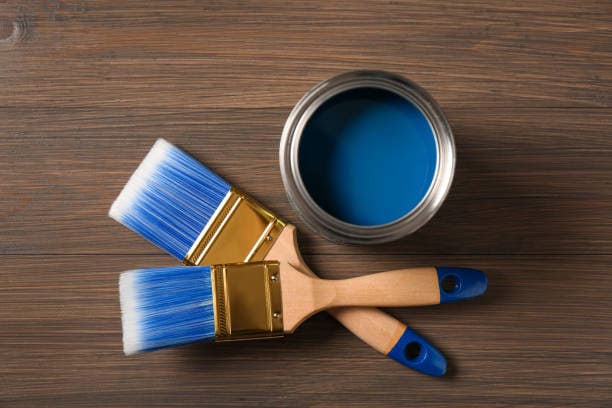
Another great reason to use synthetic brushes when painting trim or other areas that need a precise, clean edge is that they’re less likely to split or fray than natural bristles are. This means you’ll get a neater finish and spend less time cleaning up yourself!
And lastly: if you’re using oil-based paint and want your brushes to last longer than natural ones when working with this medium, then choose synthetic bristles over natural ones every time!
Specifications of Synthetic Brushes
If you’re looking for a brush that’s going to hold and release a lot of paint but still do it in a way that feels like the paint is still yours to control, we recommend the Paintbrusha synthetic paintbrush. The brush is made from nylon or synthetic, so it’s very budget-friendly. It’s perfect because it splays more efficiently and faster than other brushes. The nylon bristles hold and release a lot of paint, but they also leave behind fewer brush marks than other brushes—so you get a smoother finish.

- are made of nylon or polyester or a mix of both
- are budget-friendly
- work well with acrylics, oils and watercolours
- tend to hold and release a lot more paint
- splay more efficiently/faster
- leave a smoother finish, and few to no brush marks
- are suitable for all levels of expertise
Considerations before Buying Synthetic Brushes
Brush Width
Painting a project is a lot like baking a cake. You want to use the right tool for the job.
Brushes come in wide widths, commonly ranging from about 1 inch to 5 inches. You can apply more paint with a broader brush, but you should always match the brush width to the painted surface. And it’s best to choose a brush slightly narrower than the surface. For example, if you’re painting a 4-inch-wide window casing, use a three-1/2-inch-wide brush. A brush measuring 4 inches or broader will overlap the edges of the casing and drip paint.
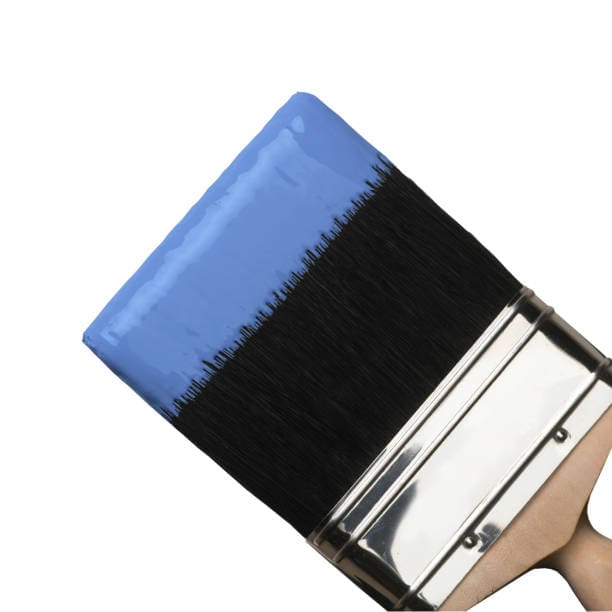
Bristle Shape
When you’re painting with a paintbrush, you want to get into the corners and angles of your walls without worrying about whether or not your brush will fit. So, it’s essential to find the right brush for the job.
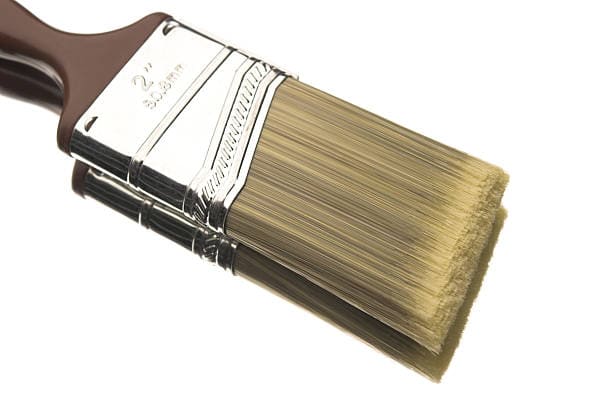
Most paintbrushes available today are square-cut brushes. They’re perfect for holding and laying paint onto virtually any surface. However, square-cut brushes don’t provide as much control when painting into corners, up to adjacent surfaces, or along narrow edges or surfaces. For more precise control, use a sash brush with bristles cut at a slight angle. Sash brushes are particularly well-suited for cutting around a room’s perimeter.
Bristle Tips
When looking at brushes, you’ll notice that some have flat tips while others are pointed. These two types of bristles should not be confused with each other—they’re both useful for different things.
Flagged bristles hold more paint and spread paint more smoothly. These bristles are cut flat and straight, resembling a standard brush. They can be beneficial when you apply paint quickly and evenly over large areas, such as primer or tinting your home’s walls.
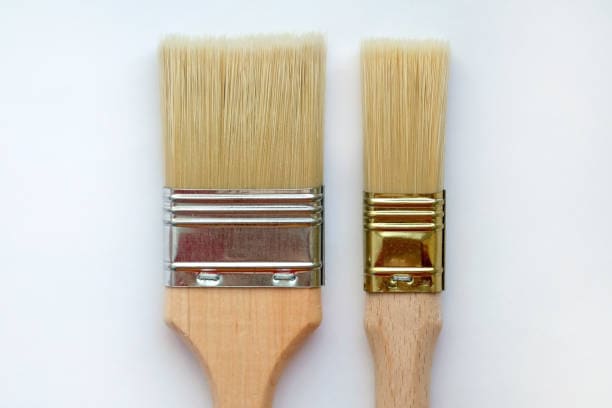
Tipped brushes come to a point; they’re not cut flat and straight, as is a standard brush. Tipped brushes provide greater control and allow you to apply paint more precisely than flagged brushes. They’re often used in detailed craft projects like painting furniture or trimming window sills.
When to Use Synthetic Bristle Brushes
Have you ever been painting and realized that your brush isn’t doing the job? Maybe it’s not holding paint well, or it’s not giving you the finish you want.
If this sounds familiar, we have the perfect solution for you: synthetic brushes. Synthetic brushes are great for any paint—they pick up paint evenly and provide a smooth finish with no splotches or streaks. They’re also easy to clean and maintain, so they’ll last longer than other brushes in your collection.
And if you’re worried that synthetic brushes won’t work well with water-based paints, we can assure you they do! The bristles are made from nylon or polyester fibres that are soft enough to hold water-based paints without soaking up too much liquid or leaving behind a glob of wetness on your walls or furniture. Synthetic bristle brushes are great when you are using:
- Water-based latex paints
- Water-based primers
- Gloss Paint
- Acrylic paint
- Water-based wood finishes
Note: If you try to apply latex paint with a natural-bristle brush, the bristles will absorb the water from the paint and become extremely limp, making it difficult to spread the paint smoothly.
Similarly, If you try to apply chalk/clay-based paint with a synthetic brush, you will likely have a lot of brush marks and a lot of extra work getting a smooth finish.
Why Choose Paintbrusha Synthetic PaintBrush
Are you looking for a brush that can create sharp edges? We’ve got you covered.
Paintbrusha is a professional manufacturer of synthetic paint brushes that are great for creating sharp edges due to their squared-off bristle shape. Crafted of synthetic fibres, the specific silhouette itself will never vary, as the brush maintains its original integrity for as long as you choose to use it, even with constant exposure to heavy and harsh oil and acrylic paints. It also works expertly with water-based paints or watercolours, if you choose. This brush’s short and flat head allows for maximum control when painting and can do so with the thickest of pigments. You can check our other post about different types of paintbrushes.

Paintbrusha excels in making OEM and custom brushes too. If you want to order a custom design, Paintbrusha will follow all your instructions and do the task as per your requirements without any mistakes at reasonable prices. What are you looking for? Just approach us today for your next project.
Care & Cleaning Tips for Synthetic Brushes
Proper care extends the life of painting tools. Modern coatings are designed to dry quickly, making cleanup problematic. The paint resins bind to brush filaments and are set up within a brief period.
Trade-quality brushes can last for years when cared for correctly.
They are an essential investment for anyone looking for a professional finish. By cleaning them properly and thoroughly at the end of the job, they will last longer and work better. It’s worth spending an extra few minutes on cleaning now to save you time and money in the future.
Here are some helpful tips if you invest time in cleaning your applicators.
Water-Based Paints (Synthetic Brushes)
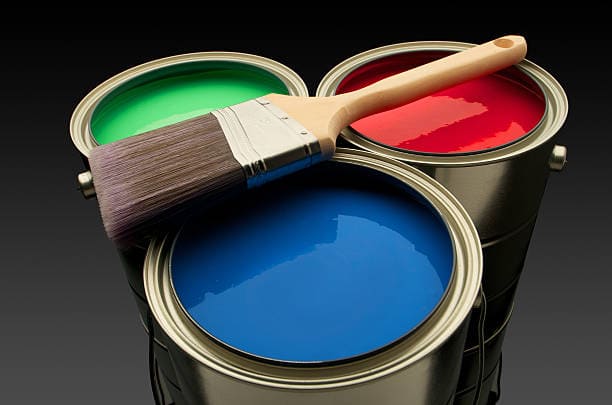
STEP 1 Rinse the brush with warm water while combing it from base to end with both sides of our Painter’s Comb™. This should loosen all partially dried paint from inside the brush.
STEP 2 Add a liberal amount of hand cleaner with pumice to the brush and work it in thoroughly. Many hand cleaner brands will do the job—some are liquid, while others are thick paste. Hand cleaner that is petroleum or lanolin-based will help condition the brush. Again, use the comb to get paint out of the interior of the brush.
STEP 3 Rinse the brush until the water clears all paint and hand cleaner. You may need to add regular hand soap during this final process for hard-to-clean primers, paints, and stains. After the final rinse, do one last comb-through with both sides of the Painter’s Comb to ensure the paint is completely removed from the centre of the brush. Then spin, comb, and hang to dry. Never place a brush back into its keeper wet—always allow it to dry completely.
Oil-Based Paints (Bristle or Synthetic Brushes)
Oil-based coatings are more difficult to clean. Due to the cost and disposal problems of solvents and the time involved in the process, cleaning the brushes may not make sense economically. Instead, allow them to dry and throw them away.
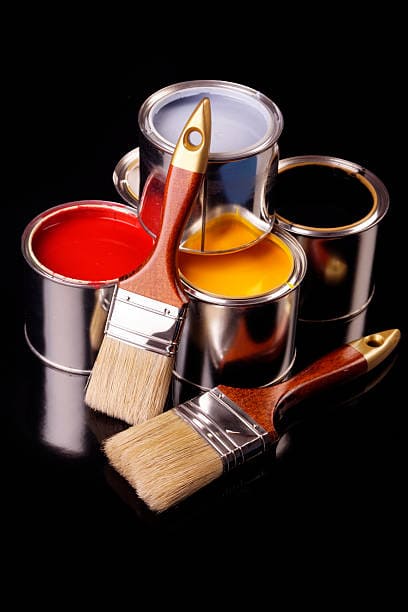
However, if you want to reuse them, here’s our suggestion for proper cleaning. Work excess coating out of the brush. Always read the manufacturer’s recommendations on the can label to know if mineral spirits, paint thinners, or lacquer cleaners should be used for cleaning.
Massage the proper solvent into the bristles. Change the solvent as it gets cloudy or dirty. If you think the brush is clean, do it again. For synthetic brushes, wash with solvent and then follow the 3-step process. Use only the solvent recommended for thinning the coating to keep the bristles from flaring. Then spin, comb, and hang to dry. Never place a brush back into its keeper wet—always allow it to dry completely.
More Tips & Advice
Cleaning your synthetic brushes only takes a few minutes, but it makes a big difference in helping to keep your tools protected. Remember, if you plan to use the brushes again the next day, you can save time on cleaning and wrap the bristles in cling film to stop the paint from drying out. If your painting project is complete, follow these simple steps to clean your tools properly.
Look at the advice blog for helpful guides on storing synthetic brushes, using your paintbrush like a pro, and the difference between budget and trade quality paintbrushes.
Shop trade quality paint, paint accessories and cleaning solutions today at The Paintbrusha. We have everything you need for the perfect paint job from start to finish.
Conclusion
The first reason we choose synthetic paint brushes is that natural paint brushes are no longer the best choice is their cost. While it may initially appear that these brushes are cheaper than those with synthetic bristles, this is not the case. Natural paint brushes require more care and maintenance than synthetic ones, so they will need replacing more frequently. This can lead to a higher overall cost, even though you might buy fewer individual brushes.
Another reason why natural paint brushes are no longer as popular as they once were is that they tend not to last as long as their synthetic counterparts do; this means that if you want your painting project done correctly, then you will need to replace them more often than if you choose a synthetic brush instead!
